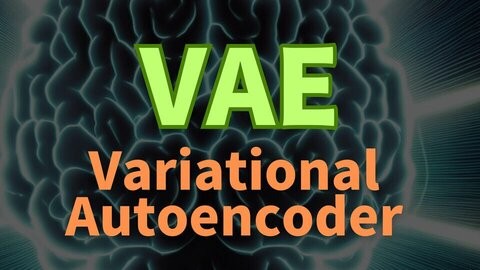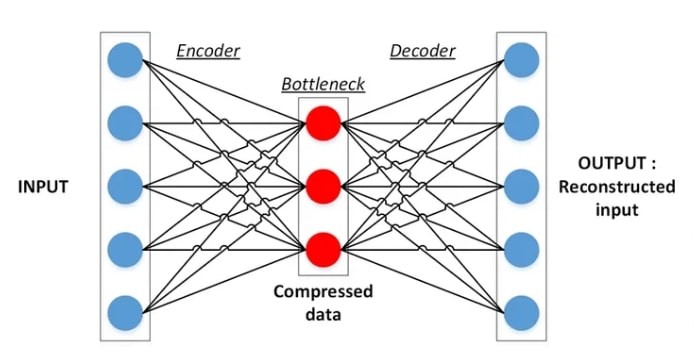- Getting Started with Generative Artificial Intelligence
- Mastering Image Generation Techniques with Generative Models
- Generating Art with Neural Style Transfer
- Exploring Deep Dream and Neural Style Transfer
- A Guide to 3D Object Generation with Generative Models
- Text Generation with Generative Models
- Language Generation Models for Prompt Generation
- Chatbots with Generative AI Models
- Music Generation with Generative Models
- A Beginner’s Guide to Generative Design
- Video Generation with Generative Models
- Anime Generation with Generative Models
- Generative Adversarial Networks (GANs)
- Generative modeling using Variational AutoEncoders
- Reinforcement Learning for Generation
- Interactive Generative Systems
- Fashion Generation with Generative Models
- Story Generation with Generative Models
- Character Generation with Generative AI
- Generative Modeling for Simulation
- Data Augmentation Techniques with Generative Models
- Future Directions in Generative AI
Generative modeling using Variational AutoEncoders | Generative AI
Introduction
Algorithms used in generative modeling in AI and machine learning produce fresh data in addition to classifying and predicting it. By examining the underlying structure of data, Variational AutoEncoders (VAEs) are a potent tool that fosters innovation in artificial intelligence. With the help of neural networks and probabilistic modeling concepts, VAEs are able to learn the distribution of potential latent representations. The architecture, training, and learning processes of VAEs are all covered in this tutorial. A unique method for producing realistic text, graphics, and other data formats is provided by VAEs.
Importance of Variational AutoEncoders (VAEs)
Variational autoencoders (VAEs) are essential for probabilistic generative modelling and unsupervised learning. For applications including picture synthesis, anomaly detection, data imputation, and drug discovery, they produce a wide range of realistic samples. Virtual Analogue Engines (VAEs) are vital in many sectors because they extract important properties from data structures and use them to create new data points that are much like the originals.
Understanding Autoencoders in VAEs
Autoencoders are techniques for unsupervised learning that acquire compressed representations of input data without the need for explicit labels. Their goal is to find linkages, structures, or hidden patterns in the data by itself. An encoder network maps the input data to a lower-dimensional latent space, while a decoder network reconstructs the original data from the latent representation. This is how autoencoders function. Together, the encoder and decoder are trained to reduce reconstruction error and extract the most important information.
Key Components of VAEs
Encoder: Within VAEs, the encoder serves as a translator, interpreting the input data and capturing all of its nuances and specifics. It exposes possible interpretations inside the latent space by mapping the data point to a probability distribution that crosses the space. A more thorough comprehension and portrayal of cultural nuances and implications are made possible by this procedure.
Latent Space: Within VAEs, the latent space is a smooth and seamless landscape for exploration. It is a lower-dimensional representation that captures the essential components of the input data. Because of its continuous architecture, interpolation and imaginative trips between data points are possible. Points from the learned distribution are sampled in order to navigate this concealed domain; these samples, when sent through the decoder network, can reveal new and distinct data points.
Decoder: In the original data space, the Decoder is a machine that can translate ideas from abstract to concrete forms. To ensure the integrity of the input data is restored, it maps a point in the latent space back to the original data space. By producing fresh data points that mimic the original input and reduce reconstruction error, the decoder adds novelty while maintaining the original input's qualities.
Implementation of Variational AutoEncoders (VAEs)
Step 1: Import libraries
import numpy as npimport matplotlib.pyplot as plt
from scipy.stats import norm
import tensorflow as tf
import tensorflow.keras.backend as K
from tensorflow.keras import (
layers,
models,
datasets,
callbacks,
losses,
optimizers,
metrics,
)
batch = dataset.take(1).get_single_element()
if isinstance(batch, tuple):
batch = batch[0]
return batch.numpy()
def display(
images, n=10, size=(20, 3), cmap="gray_r", as_type="float32", save_to=None
):
"""
Displays n random images from each one of the supplied arrays.
"""
if images.max() > 1.0:
images = images / 255.0
elif images.min() < 0.0:
images = (images + 1.0) / 2.0
plt.figure(figsize=size)
for i in range(n):
_ = plt.subplot(1, n, i + 1)
plt.imshow(images[i].astype(as_type), cmap=cmap)
plt.axis("off")
if save_to:
plt.savefig(save_to)
print(f"\nSaved to {save_to}")
plt.show()
def sample_batch(dataset):Step 2: Data Preparation
(x_train, y_train), (x_test, y_test) = datasets.fashion_mnist.load_data()Output results:
Downloading data from https://storage.googleapis.com/tensorflow/tf-keras-datasets/train-labels-idx1-ubyte.gz
29515/29515 [==============================] - 0s 0us/step
Downloading data from https://storage.googleapis.com/tensorflow/tf-keras-datasets/train-images-idx3-ubyte.gz
26421880/26421880 [==============================] - 0s 0us/step
Downloading data from https://storage.googleapis.com/tensorflow/tf-keras-datasets/t10k-labels-idx1-ubyte.gz
5148/5148 [==============================] - 0s 0us/step
Downloading data from https://storage.googleapis.com/tensorflow/tf-keras-datasets/t10k-images-idx3-ubyte.gz
4422102/4422102 [==============================] - 0s 0us/step
Step 3: Data Preprocessing
def preprocess(imgs):"""
Normalize and reshape the images
"""
imgs = imgs.astype("float32") / 255.0
imgs = np.pad(imgs, ((0, 0), (2, 2), (2, 2)), constant_values=0.0)
imgs = np.expand_dims(imgs, -1)
return imgs
x_train = preprocess(x_train)
x_test = preprocess(x_test)
Step 4: Designing and Building Variational Autoencoder
#Sampling Layerclass Sampling(layers.Layer):
#We create a new layer by subclassing the keras base Layer
def call(self, inputs):
#
z_mean, z_log_var = inputs
batch = tf.shape(z_mean)[0]
dim = tf.shape(z_mean)[1]
epsilon = K.random_normal(shape=(batch, dim))
return z_mean + tf.exp(0.5 * z_log_var) * epsilon
# Encoder
image_size = 32
embed_dim = 2
encoder_input = layers.Input(
shape=(image_size, image_size, 1), name="encoder_input"
)
x = layers.Conv2D(32, (3, 3), strides=2, activation="relu", padding="same")(
encoder_input
)
x = layers.Conv2D(64, (3, 3), strides=2, activation="relu", padding="same")(x)
x = layers.Conv2D(128, (3, 3), strides=2, activation="relu", padding="same")(x)
shape_before_flattening = K.int_shape(x)[1:] # the decoder will need this!
x = layers.Flatten()(x)
z_mean = layers.Dense(embed_dim, name="z_mean")(x)
z_log_var = layers.Dense(embed_dim, name="z_log_var")(x)
z = Sampling()([z_mean, z_log_var])
encoder = models.Model(encoder_input, [z_mean, z_log_var, z], name="encoder")
encoder.summary()
Output results:
Model: "encoder"__________________________________________________________________________________________________
Layer (type) Output Shape Param # Connected to
==================================================================================================
encoder_input (InputLayer) [(None, 32, 32, 1)] 0 []
conv2d (Conv2D) (None, 16, 16, 32) 320 ['encoder_input[0][0]']
conv2d_1 (Conv2D) (None, 8, 8, 64) 18496 ['conv2d[0][0]']
conv2d_2 (Conv2D) (None, 4, 4, 128) 73856 ['conv2d_1[0][0]']
flatten (Flatten) (None, 2048) 0 ['conv2d_2[0][0]']
z_mean (Dense) (None, 2) 4098 ['flatten[0][0]']
z_log_var (Dense) (None, 2) 4098 ['flatten[0][0]']
sampling (Sampling) (None, 2) 0 ['z_mean[0][0]',
'z_log_var[0][0]']
==================================================================================================
Total params: 100868 (394.02 KB)
Trainable params: 100868 (394.02 KB)
Non-trainable params: 0 (0.00 Byte)
__________________________________________________________________________________________________
# Decoderdecoder_input = layers.Input(shape=(embed_dim,), name="decoder_input")
x = layers.Dense(np.prod(shape_before_flattening))(decoder_input)
x = layers.Reshape(shape_before_flattening)(x)
x = layers.Conv2DTranspose(
128, (3, 3), strides=2, activation="relu", padding="same"
)(x)
x = layers.Conv2DTranspose(
64, (3, 3), strides=2, activation="relu", padding="same"
)(x)
x = layers.Conv2DTranspose(
32, (3, 3), strides=2, activation="relu", padding="same"
)(x)
decoder_output = layers.Conv2D(
1,
(3, 3),
strides=1,
activation="sigmoid",
padding="same",
name="decoder_output",
)(x)
decoder = models.Model(decoder_input, decoder_output)
decoder.summary()
Output results:
Model: "model"_________________________________________________________________
Layer (type) Output Shape Param #
=================================================================
decoder_input (InputLayer) [(None, 2)] 0
dense (Dense) (None, 2048) 6144
reshape (Reshape) (None, 4, 4, 128) 0
conv2d_transpose (Conv2DTr (None, 8, 8, 128) 147584
anspose)
conv2d_transpose_1 (Conv2D (None, 16, 16, 64) 73792
Transpose)
conv2d_transpose_2 (Conv2D (None, 32, 32, 32) 18464
Transpose)
decoder_output (Conv2D) (None, 32, 32, 1) 289
=================================================================
Total params: 246273 (962.00 KB)
Trainable params: 246273 (962.00 KB)
Non-trainable params: 0 (0.00 Byte)
_________________________________________________________________
Step 5: Lets Train our Variational Autoencoder
class VAE(models.Model):def __init__(self, encoder, decoder, **kwargs):
super(VAE, self).__init__(**kwargs)
self.encoder = encoder
self.decoder = decoder
self.total_loss_tracker = metrics.Mean(name="total_loss")
self.reconstruction_loss_tracker = metrics.Mean(
name="reconstruction_loss"
)
self.kl_loss_tracker = metrics.Mean(name="kl_loss")
@property
def metrics(self):
return [
self.total_loss_tracker,
self.reconstruction_loss_tracker,
self.kl_loss_tracker,
]
def call(self, inputs):
"""Call the model on a particular input."""
z_mean, z_log_var, z = encoder(inputs)
reconstruction = decoder(z)
return z_mean, z_log_var, reconstruction
def train_step(self, data):
"""Step run during training."""
with tf.GradientTape() as tape:
z_mean, z_log_var, reconstruction = self(data)
beta = 500
reconstruction_loss = tf.reduce_mean(
beta
* losses.binary_crossentropy(
data, reconstruction, axis=(1, 2, 3)
)
)
kl_loss = tf.reduce_mean(
tf.reduce_sum(
-0.5
* (1 + z_log_var - tf.square(z_mean) - tf.exp(z_log_var)),
axis=1,
)
)
total_loss = reconstruction_loss + kl_loss
grads = tape.gradient(total_loss, self.trainable_weights)
self.optimizer.apply_gradients(zip(grads, self.trainable_weights))
self.total_loss_tracker.update_state(total_loss)
self.reconstruction_loss_tracker.update_state(reconstruction_loss)
self.kl_loss_tracker.update_state(kl_loss)
return {m.name: m.result() for m in self.metrics}
def test_step(self, data):
"""Step run during validation."""
if isinstance(data, tuple):
data = data[0]
z_mean, z_log_var, reconstruction = self(data)
beta = 500
reconstruction_loss = tf.reduce_mean(
beta
* losses.binary_crossentropy(data, reconstruction, axis=(1, 2, 3))
)
kl_loss = tf.reduce_mean(
tf.reduce_sum(
-0.5 * (1 + z_log_var - tf.square(z_mean) - tf.exp(z_log_var)),
axis=1,
)
)
total_loss = reconstruction_loss + kl_loss
return {
"loss": total_loss,
"reconstruction_loss": reconstruction_loss,
"kl_loss": kl_loss,
}
vae = VAE(encoder, decoder)Step 6: Starting Training
# Compile the variational autoencoderoptimizer = optimizers.Adam(learning_rate=0.0005)
vae.compile(optimizer=optimizer)
model_checkpoint_callback = callbacks.ModelCheckpoint(
filepath="./checkpoint",
save_weights_only=False,
save_freq="epoch",
monitor="loss",
mode="min",
save_best_only=True,
verbose=0,
)
tensorboard_callback = callbacks.TensorBoard(log_dir="./logs")
vae.fit(x_train,
epochs=5,
batch_size=50,
shuffle=True,
validation_data=(x_test, x_test),
callbacks=[model_checkpoint_callback, tensorboard_callback],
)
Output results:
Epoch 1/51195/1200 [============================>.] - ETA: 0s - total_loss: 150.8727 - reconstruction_loss: 146.2451 - kl_loss: 4.6275WARNING:tensorflow:Can save best model only with loss available, skipping.
1200/1200 [==============================] - 17s 8ms/step - total_loss: 150.8177 - reconstruction_loss: 146.1882 - kl_loss: 4.6294 - val_loss: 136.6184 - val_reconstruction_loss: 131.4518 - val_kl_loss: 5.1666
Epoch 2/5
1197/1200 [============================>.] - ETA: 0s - total_loss: 134.7354 - reconstruction_loss: 129.7034 - kl_loss: 5.0320WARNING:tensorflow:Can save best model only with loss available, skipping.
1200/1200 [==============================] - 8s 7ms/step - total_loss: 134.7361 - reconstruction_loss: 129.7041 - kl_loss: 5.0320 - val_loss: 134.5743 - val_reconstruction_loss: 129.4605 - val_kl_loss: 5.1138
Epoch 3/5
1200/1200 [==============================] - ETA: 0s - total_loss: 133.2709 - reconstruction_loss: 128.1776 - kl_loss: 5.0934WARNING:tensorflow:Can save best model only with loss available, skipping.
1200/1200 [==============================] - 8s 7ms/step - total_loss: 133.2709 - reconstruction_loss: 128.1776 - kl_loss: 5.0934 - val_loss: 133.8215 - val_reconstruction_loss: 128.5919 - val_kl_loss: 5.2296
Epoch 4/5
1198/1200 [============================>.] - ETA: 0s - total_loss: 132.4913 - reconstruction_loss: 127.3487 - kl_loss: 5.1428WARNING:tensorflow:Can save best model only with loss available, skipping.
1200/1200 [==============================] - 9s 7ms/step - total_loss: 132.4916 - reconstruction_loss: 127.3490 - kl_loss: 5.1428 - val_loss: 132.6691 - val_reconstruction_loss: 127.3441 - val_kl_loss: 5.3251
Epoch 5/5
1197/1200 [============================>.] - ETA: 0s - total_loss: 131.9378 - reconstruction_loss: 126.7507 - kl_loss: 5.1871WARNING:tensorflow:Can save best model only with loss available, skipping.
1200/1200 [==============================] - 8s 7ms/step - total_loss: 131.9424 - reconstruction_loss: 126.7551 - kl_loss: 5.1873 - val_loss: 132.3715 - val_reconstruction_loss: 126.9836 - val_kl_loss: 5.3879
<keras.src.callbacks.History at 0x79797b6c80a0>
Step 7: Saving Trained Checkpoints
# Save the final modelsvae.save("./models/vae")
encoder.save("./models/encoder")
decoder.save("./models/decoder")
Step 8: Lets try to reconstruct using our trained variational autoencoder
n_to_predict = 5000example_images = x_test[:n_to_predict]
example_labels = y_test[:n_to_predict]
z_mean, z_log_var, reconstructions = vae.predict(example_images)
print("Example real clothing items")
# display(example_images)
print("Reconstructions")
Output results:
157/157 [==============================] - 1s 5ms/stepExample real clothing items
Reconstructions
Step 9: Lets visualize Latent Space
z_mean, z_var, z = encoder.predict(example_images)p = norm.cdf(z)
Output results:
157/157 [==============================] - 0s 2ms/stepfigsize = 8fig = plt.figure(figsize=(figsize * 2, figsize))
ax = fig.add_subplot(1, 2, 1)
plot_1 = ax.scatter(
z[:, 0], z[:, 1], cmap="rainbow", c=example_labels, alpha=0.8, s=3
)
plt.colorbar(plot_1)
ax = fig.add_subplot(1, 2, 2)
plot_2 = ax.scatter(
p[:, 0], p[:, 1], cmap="rainbow", c=example_labels, alpha=0.8, s=3
)
plt.show()
Output results:
Conclusion
Variational AutoEncoders (VAEs) are used in AI and machine learning to recreate images, as this lesson illustrates. Using TensorFlow and Keras, the VAE generates points in a latent space, reconstructs images, and extracts meaningful representations. The trained VAE improved machine learning and artificial intelligence by correctly reconstructing images.


